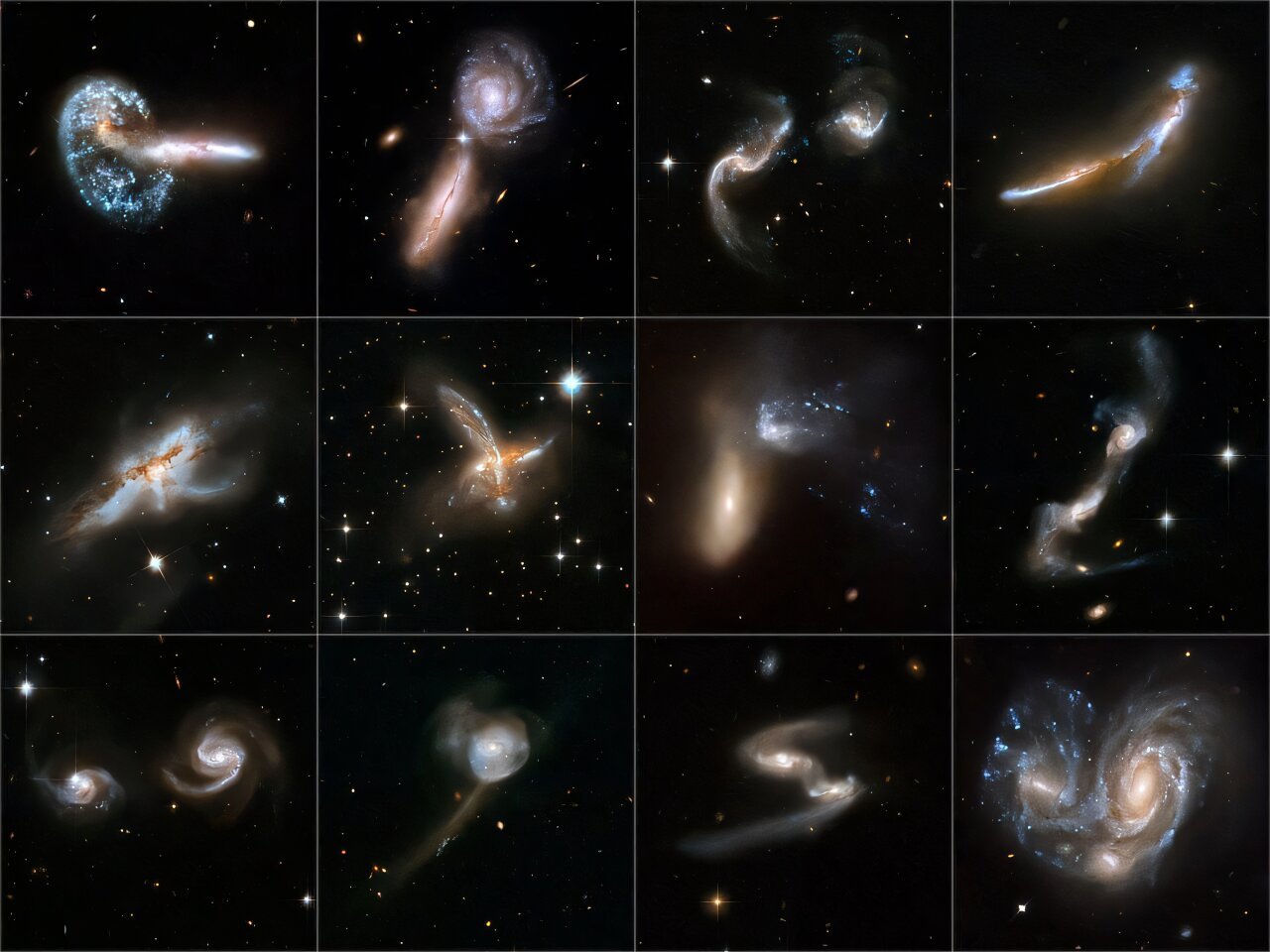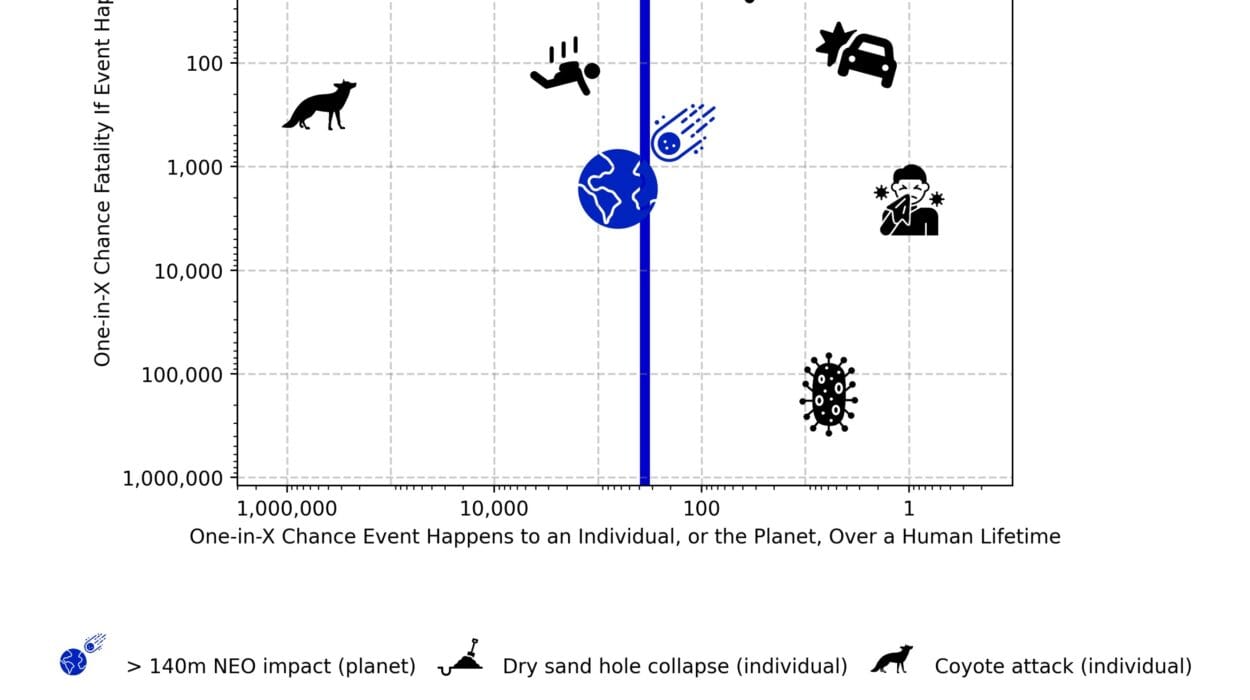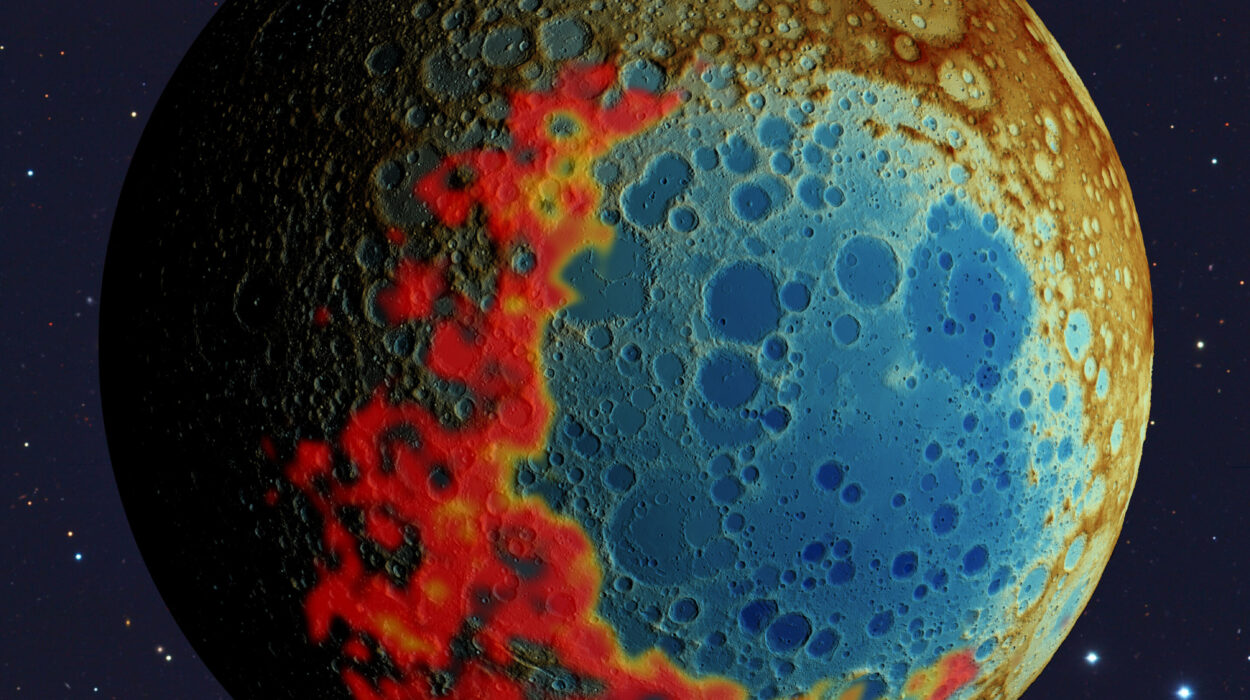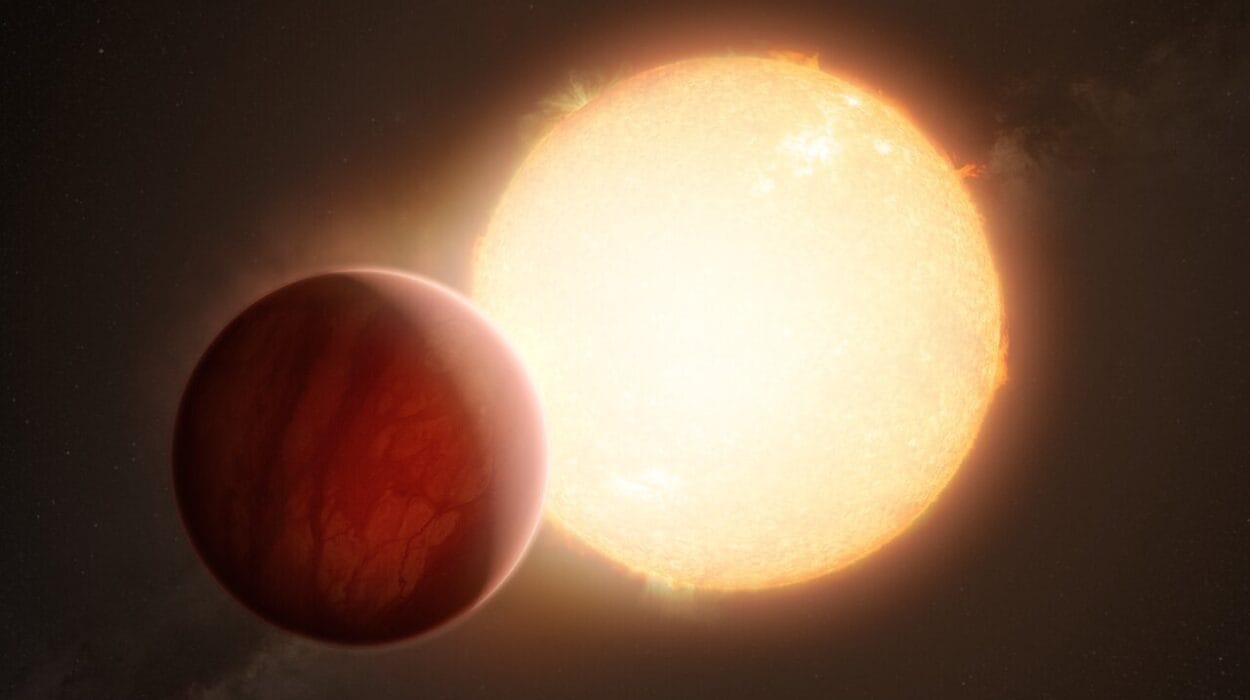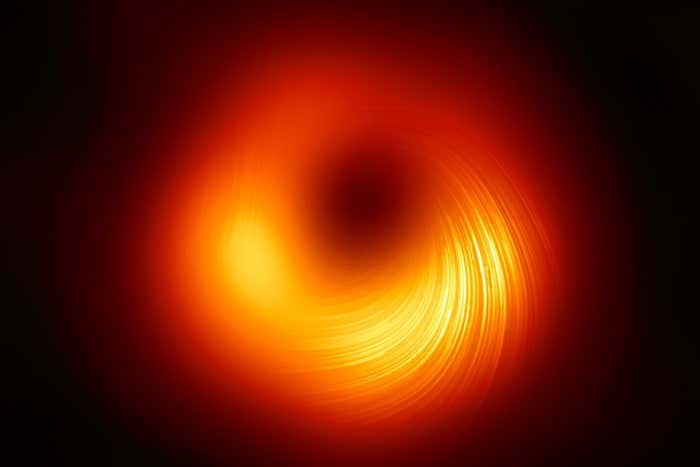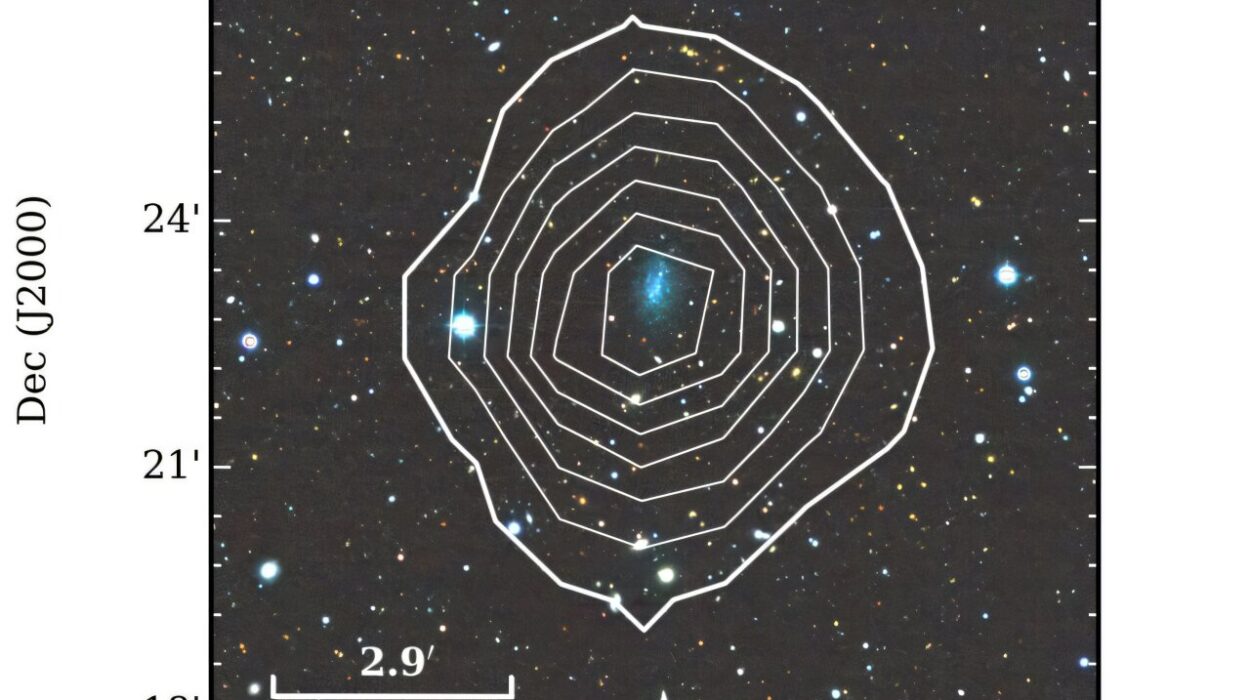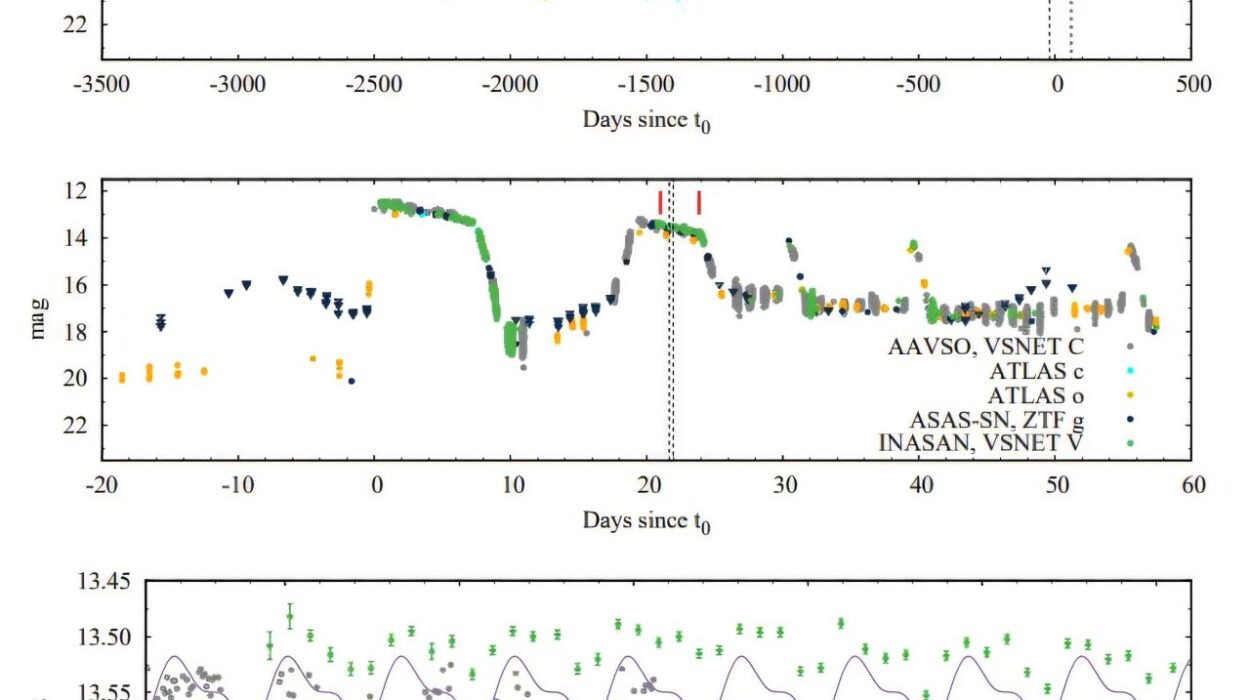When galaxies collide, it’s not an explosion or a crash as we might imagine. It’s a slow, graceful, yet violent ballet that unfolds over millions of years. Two colossal systems, each containing billions of stars, planets, and clouds of gas, are drawn together by the invisible pull of gravity. They twist and stretch one another, their delicate spiral arms shredding and reforming in dazzling displays of light. Entire constellations are flung into intergalactic space. Yet amid the chaos and beauty, the real drama unfolds at their very hearts — where two supermassive black holes begin their own dance of destiny.
At the center of nearly every large galaxy lies a supermassive black hole, an object with millions or even billions of times the mass of our Sun. When two galaxies merge, their central black holes are destined to meet. Slowly, inevitably, they spiral toward each other, sinking into the dense core of the new, merged galaxy. This process sets the stage for one of the most extreme and mysterious phenomena in the cosmos: the creation of a supermassive black hole binary.
The Hidden Giants
Supermassive black holes are among the strangest and most powerful entities in existence. Despite their name, they are not cosmic vacuum cleaners swallowing everything around them. Instead, most of the time they sit quietly, invisible, exerting only their immense gravitational pull on the stars and gas nearby. When they feed — when matter falls toward their event horizon — they flare to life as quasars or active galactic nuclei, outshining entire galaxies.
Now imagine two of these monsters locked in orbit around each other, circling a shared center of gravity. Together, they would generate forces and radiation so powerful that even across millions of light years, their effects could be seen. Yet despite decades of searching, astronomers have never conclusively observed such a pair. The universe, it seems, hides its most extraordinary dances well.
Following the Trail of Evidence
Recently, an international team of astronomers led by Martin G. H. Krause took a deep look at the evidence. Their review gathered data from telescopes spanning the electromagnetic spectrum — radio waves, visible light, X-rays, and beyond — all to piece together the story of these elusive binaries. The findings reveal not only what we’ve seen, but what we might expect to see as these cosmic giants spiral toward their final embrace.
According to theory, the birth of a supermassive black hole binary follows a well-defined path. When two galaxies merge, each black hole begins to sink toward the center of the newly formed galaxy. As they move through the surrounding stars, gas, and dark matter, they transfer some of their momentum to that material — a process called dynamical friction. It’s like two massive ships plowing through a sea of stars, slowing down as they disturb the waters.
Over time, this drag draws the black holes closer together. At first, they might be thousands of light years apart. Then hundreds. Then perhaps just a few. Eventually, they orbit each other like two planets caught in an invisible gravitational tether. But even at such close quarters, they remain almost impossible to detect directly.
The Fingerprints of an Invisible Dance
Although no supermassive black hole binary has been definitively seen, the universe offers hints. Astronomers have discovered galaxies that display peculiar double-peaked emission lines in their spectra — a possible signature of two accretion disks orbiting in opposite directions around separate black holes. Others show radio jets that curve or wobble, forming elegant S-shaped structures, suggesting that one black hole’s jet is being tugged by the orbital motion of its companion.
One of the most intriguing clues comes from radio telescopes like LOFAR, which have spotted galaxies with exactly these characteristics. These could be snapshots of black holes in the midst of their cosmic waltz — though confirmation remains challenging. Even with our most powerful instruments, the regions near these black holes are so compact and bright that separating one from the other is like trying to distinguish two fireflies orbiting in front of a searchlight on the far side of the galaxy.
Dual Active Galactic Nuclei: The Closest We’ve Come
Astronomers have, however, identified what appear to be dual active galactic nuclei — systems where both black holes are feeding simultaneously on surrounding gas. These are some of the most compelling candidates for future confirmation of true binaries.
At large separations, sometimes thousands of light years apart, both active cores can occasionally be imaged as distinct points of light. As they move closer, their signals begin to blend, leaving behind subtle fingerprints: strange shifts in light, rhythmic patterns in brightness, or unusual alignments of jets. It’s a cosmic detective story — one that spans across wavelengths, distances, and time itself.
The review by Krause and his team brings together all these clues, creating the most comprehensive portrait yet of these enigmatic pairs. But even so, the final proof remains tantalizingly out of reach.
The Gravitational Whisper of Giants
What makes the hunt for supermassive black hole binaries truly exciting is their connection to one of modern physics’ most astonishing discoveries: gravitational waves.
Einstein’s theory of general relativity predicted that massive objects accelerating through space should produce ripples in spacetime itself — waves that stretch and squeeze the universe as they pass. In 2015, the Laser Interferometer Gravitational-Wave Observatory (LIGO) made history by detecting such waves for the first time, produced by merging stellar-mass black holes just a few dozen times more massive than the Sun.
But supermassive black hole binaries would produce waves of an entirely different kind. Their gravitational whispers are lower in frequency and longer in duration, taking years or even centuries to complete a single cycle. These are not bursts of sound, but deep cosmic hums that could be detected through different methods — by studying how precisely timed pulsars (rotating neutron stars) are subtly affected as gravitational waves pass between them and Earth.
Projects known as pulsar timing arrays are now listening for these faint signals. Meanwhile, the upcoming space mission LISA — the Laser Interferometer Space Antenna — will attempt to detect such waves directly from space. When that happens, we may finally hear the cosmic heartbeat of merging galactic giants.
The Final Parsec Problem
Yet there remains a mystery that challenges even our best theories: how do two black holes close the final distance and actually merge?
This is known as the final parsec problem. Once the black holes are within a few light years of each other, they’ve given away much of their energy to the surrounding stars and gas. But as that material gets used up or scattered, there may not be enough left to drain more energy from the orbit. Without something to slow them further, the two black holes could simply circle each other indefinitely, locked in a cosmic stalemate.
Scientists have proposed several possible solutions. Passing stars might steal tiny bits of orbital energy. Streams of gas might form a dense disk that exerts drag. Or perhaps the arrival of a third supermassive black hole — from another galactic merger — could jostle the pair, pushing them over the edge toward coalescence. Each scenario paints a different ending to the same cosmic story.
Why It Matters
You might wonder: why do astronomers care so deeply about something so distant, so seemingly abstract? Because these colossal unions shape the history of the universe itself.
Every time galaxies merge, their stars and gas are redistributed. New bursts of star formation ignite. The merging black holes stir up matter and energy, sculpting their host galaxies into new forms. By understanding how supermassive black hole binaries form and evolve, we are uncovering the hidden mechanics behind the growth of galaxies — and ultimately, behind the evolution of cosmic structure itself.
In a sense, studying these systems is like tracing our own ancestry. The Milky Way, too, will one day collide with its nearest neighbor, the Andromeda Galaxy. In about four billion years, their central black holes will meet and merge, creating a new, even more massive galactic heart. Our descendants — if any remain — may watch that cosmic union unfold in the night sky, a dance of destruction and creation on the grandest scale imaginable.
The Unfinished Symphony of the Universe
Despite the vast distances and the unimaginable scales involved, there’s something profoundly human about this quest. We look up at the night sky and see stars, galaxies, and endless darkness, yet behind that beauty lies motion, struggle, and transformation. Galaxies collide, stars are born and die, black holes merge — and through it all, the universe evolves.
The search for supermassive black hole binaries is not just a pursuit of data; it is a pursuit of understanding — of how order emerges from chaos, how destruction becomes creation, and how even in the void, the cosmos dances.
The universe is a symphony still being composed. And somewhere, far beyond the reach of our eyes but not beyond the reach of our imagination, two invisible titans may already be circling each other — slowly, silently, preparing for the moment when their voices will join in one final, thunderous chord that will ripple across spacetime for eternity.
More information: Martin G. H. Krause et al, Evidence for Supermassive Black Hole Binaries, arXiv (2025). DOI: 10.48550/arxiv.2510.07534
